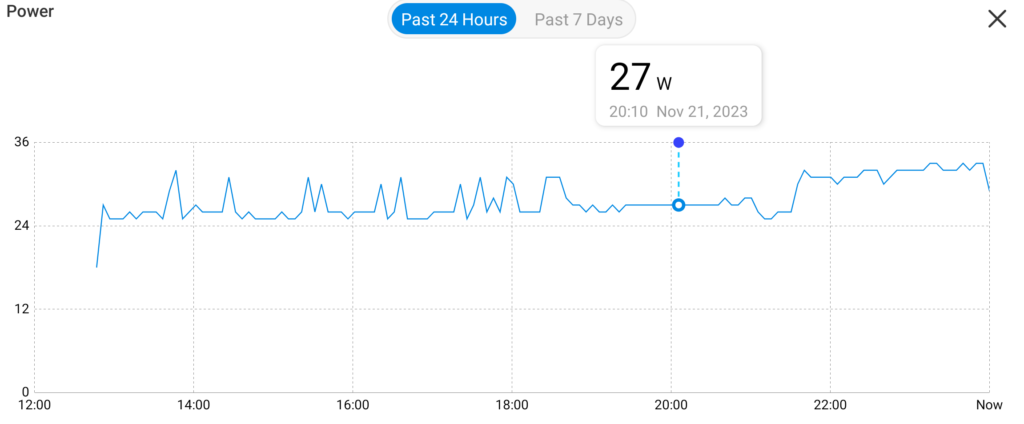Smart home: Starting with OPNSense Router, Eero Wi-Fi and a pile of cables
I recently moved into a home, that whether I like it or note, is rather “smart”.
There is a Ring video doorbell, Ring camera out the back and Wi-Fi radiators throughout, not to mention the Wi-Fi fridge, dishwasher, washing machine, hot water tank and Amazon Echo Dot that I was recently gifted.
In total, I think there are around 18 Wi-Fi devices in the house before I add any of my own.
Router choice
When first moving in, I only had an old Netgear WNR1000v3 router that would barely give a single client 40MBps connection, let alone be able to support 20+ devices moving forward. It also really couldn’t handle the fibre internet speed, given it is from 2011.
I also tried an old Plusnet hub that I had kicking around, but apparently they lock the PPPoe details to only allow Plusnet accounts?
Trusting the advice of my dear friend Ollie after discussing his “2022.11.14 Low Power Firewall” research spreadsheet, I settled on buying a Beelink U59 Pro N5105 mini PC (that would also arrive the next day).

You can find a good performance review including power benchmarks for this device on CNX Software.
OPNSense
Also trusting Ollie’s judgment, I dove right in with OPNSense, following a perfect guide from Home Network Guy that saw me flashing my new little PC with a USB stick in no time.
Note: The Beelink has Realtek nics and you WILL need to install the os-realtek-re plugin.
A keyboard and mouse were needed for this process, but OPNSense was quickly installed, configured with my PPPoe details, and connected to my fiber ONT.
TADA, internet! (Once I got the NICs connected the right way around)
By the end of the week, I already have a variety of plugins installed:
- os-git-backup (installed) 1.0_3 14.2KiB 2 OPNsense Track config changes using git
- os-netdata (installed) 1.2_1 17.2KiB 3 OPNsense Real-time performance monitoring
- os-node_exporter (installed) 1.1 18.6KiB 3 OPNsense Prometheus exporter for machine metrics
- os-ntopng (installed) 1.2_2 20.5KiB 3 OPNsense Traffic Analysis and Flow Collection
- os-realtek-re (installed) 1.0 361B 3 OPNsense Realtek re(4) vendor driver
- os-redis (installed) 1.1_2 68.4KiB 3 OPNsense Redis DB
- os-sensei (installed) 1.15.2 227MiB N/A SunnyValley Next Generation Firewall Extensions for OPNsense (ZENARMOR)
- os-sensei-updater (installed) 1.15 4.99KiB N/A SunnyValley OPNsense ZENARMOR Plugin Updater
- os-sunnyvalley (installed) 1.3 631B 3 OPNsense Vendor Repository for Zenarmor (a.k.a Sensei, Next Generation Firewall Extensions)
- os-upnp (installed) 1.5_4 34.0KiB 3 OPNsense Universal Plug and Play Service
- os-vnstat (installed) 1.3_1 22.1KiB 3 OPNsense Network traffic monitor
Even while absolutely thrashing the gigabit connection, and having lots of logging and multiple firewall setups on the go, the PC seemed to cope just fine, never quite maxing out.

Wi-Fi choice
Looking at the ntopng dashboard that is a plugin for OPNsense I realize that at time of writing this I am now at 54 network devices, most of which are Wi-Fi.
So although my old Netgear router was still seeing my through the first few days, after some quick researching and a near purchase of some TP-LINK Decos, I ultimately settled on a set of 3 Amazon eero Pro 6 mesh Wi-Fi 6 routers.
These can be configured with Ethernet backhaul which is great, and I ultimately decided that my Wi-Fi needs didn’t need Wi-Fi 6E or 7 speeds.
I ultimately followed the steps in an Eero community post for my setup, as I wanted to keep my Beelink PC as my router, and simply use the Eeros for a WiFi mesh with Ethernet backhaul / connection. The key part of this post is that ALL the Eero devices need to be setup in bridge mode.
You can find bridge mode in the advanced network settings.
Once it’s all connected, your app will look something like this.

I get ~300-400Mbps over Wi-Fi when the mesh has decided to connect me to the router in the same room as me. Sometimes it can be a little slow, and I’ll stay connected to the other side of the house and remain on around 20-50Mbps.
While wired into the Eero that is on my desk, I easily achieve 900+ Mbps
Next
The setup certainly leaves a little to be desired right now, with everything stacked on top of a pile of game boxes and strewn all over the floor.
This all needs to get wall mounted so that I can actually make use of this cupboard again.

I’m going to be adding a home lab server to this setup soon, including a large NAS, some Home assistant magic for some Zigbee devices, and hopefully that will also integrate the tens of Wi-Fi devices that I have already collected.
I wanted to know how much power this little corner was drawing, so I also added a single TP-Link Tapo P110 Wi-Fi plug that includes power monitoring in front of everything network related (yes, more things for the Wi-Fi network)…
So far, while generally loaded throughout the day this seems to average at ~27W (~16p per day) or below for the ONT, Beelink PC running OPNsense, NETGEAR ProSafe 24 Port Gigabit Smart Switch and the old Netgear router.

As soon as I have finished migrating my radiators to the new Eero devices I’ll be getting rid of the Netgear router entirely.
Until next time!